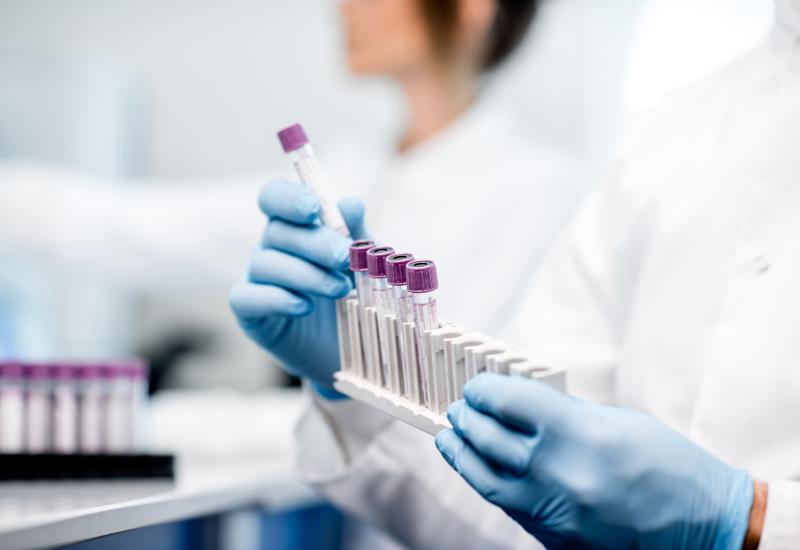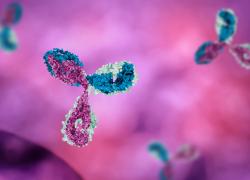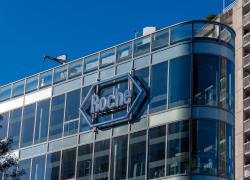
ESMO 2025 preview – Merck hopes for Daiichi redemption
The first pivotal data with raludotatug deruxtecan will feature as a late-breaker.
The first pivotal data with raludotatug deruxtecan will feature as a late-breaker.

Merck & Co’s huge ADC tie-up with Daiichi Sankyo recently took a blow with the failure of patritumab deruxtecan in lung cancer; now another project from the same deal, the CDH6-targeting raludotatug deruxtecan, will come under the spotlight at the upcoming ESMO meeting.
The conference will see the first pivotal data on this ADC, from the phase 2/3 Rejoice-Ovarian01 trial. One reason to be cautious is that Merck and Daiichi haven’t toplined the study, although phase 1 results looked promising.
Other notable presentations include first-in-human data for Incyte’s KRAS G12D inhibitor INCB161734 and AstraZeneca’s folate receptor alpha (FRα)-targeting ADC torvutatug samrotecan. And Roche has managed to get the Evera trial of its oral SERD giredestrant into the programme as a last-minute late-breaker, despite only toplining a win last week.
Time to Rejoice?
On the eve of 2023’s ESMO meeting Merck paid $5.5bn up front to license three Daiichi ADCs, including ralu-dxd. At the congress itself, a phase 1 trial produced a confirmed ORR of 46% among 50 late-line ovarian cancer patients given ralu-dxd at 4.8-8.0mg/kg. Still, the results might have been flattered by the inclusion of the highest dose, which was discontinued after two patients receiving 8.0mg/kg died from interstitial lung disease.
Adverse events will therefore be closely watched in Rejoice-Ovarian01, a trial in platinum-resistant ovarian cancer that includes a dose-optimisation portion, testing 4.8-6.4mg/kg, and a randomised portion evaluating ralu-dxd versus investigator’s choice of chemo.
Another factor to consider is that Merck’s PD-1 blocker Keytruda recently scored in a similar setting, in the Keynote-B96 trial; data will also feature at ESMO, allowing results to be compared across these two trials.
There are only a few other CDH6-targeting projects in clinical trials; one is SIM0505, for which NextCure recently paid Simcere a much less demanding $12m up front.
FRα
Ovarian cancer is also a focus for FRα, with AbbVie’s Elahere approved, and promising data reported with Genmab and Lilly’s next-generation ADCs rinatabart sesutecan and LY4170156 respectively. However, Sutro discontinued its similarly acting asset luveltamab tazevibulin earlier this year.
Both Elahere and luvelta-T use a tubulin inhibitor payload, while rina-S and LY4170156 employ a more in-vogue topoisomerase 1 inhibitor – as does AstraZeneca’s torvutatug samrotecan.
An ESMO oral presentation concerns torvuta-S's phase 1/2 solid tumour trial, Fontana, which tests monotherapy and various combinations. According to the title, however, ESMO data will be limited to platinum-resistant ovarian cancer.
Astra has some catching up to do, but could have a contender if it can get close to an ORR of around 55%, as seen with rina-S and LY4170156.
The private German biotech Tubulis is also shooting for ovarian cancer with its NaPi2b-targeting ADC TUB-040, and at ESMO the first human data will be presented, from the phase 1/2 Napistar1-01 trial.
The omens here aren’t as good: Mersana and Zymeworks have abandoned NaPi2b ADCs, and the only other assets left in the clinic, according to OncologyPipeline, are MediLink’s ADC YL205 and LaNova’s LM-2417, a bispecific that also activates the 4-1BB co-stimulatory domain – another area that has seen various disappointments.
While Tubulis has limited competition, there are apparently no direct rivals for Daiichi’s DS-3939, a tumour-associated MUC1-targeting ADC. There are several MUC1 ADCs in the clinic, but hitting TA-MUC1 is said to allow more precise targeting to cancer cells.
DS-3939 is based on the antibody gatipotuzumab, to which Daiichi acquired full rights from Glycotope in January. The ESMO data, in solid tumours, could indicate whether the Japanese group was wise to go all in here.
KRAS G12D
Meanwhile, KRAS G12D has also had its ups and downs, and the latest group to try to make a mark here will be Incyte, with INCB161734.
G12D had looked like a dead end after lacklustre data with Jiangsu HengRui’s inhibitor HRS-4642 and Astellas’s degrader ASP3082; Bristol also ditched its contender, MRTX1133 after seeing “suboptimal” pharmacokinetics. But Revolution’s inhibitor zoldonrasib has shown promise – with caveats – and plenty of others have piled into this mechanism.
Also in KRAS G12D, ESMO will feature updates on HengRui’s aforementioned HRS-4642 and Verastem/Genfleet’s GFH375.
Finally, as hinted at by Roche last week, a late-breaking abstract has just been allocated to that group’s oral SERD giredestrant. The main question around the Evera trial, in second-line ER-positive HER2-negative breast cancer, is whether a claimed benefit in all-comers was driven solely by patients with ESR1 mutations, and whether Roche will be able to get a broader label than its SERD rivals. All could be revealed at ESMO.
Selected ESMO presentations
| Study | Project | Description | Company/ies | Details | Abstract |
|---|---|---|---|---|---|
| Evera | Giredestrant | Oral SERD | Roche | Ph3 in 2nd-line ER+ve, HER2-ve breast cancer (+ everolimus, vs endocrine therapy + everolimus) | LBA16 |
| INCB161734-101 | INCB161734 | KRAS G12D inhibitor | Incyte | Ph1 solid tumour study | 916O |
| DS3939-077 | DS-3939 | Anti-TA-MUC1 ADC | Daiichi | Ph1/2 solid tumour study | 917O |
| Rejoice-Ovarian01 | Raludotatug deruxtecan | Anti-CDH6 ADC | Merck/Daiichi | Ph2/3 in platinum-resistant ovarian cancer (vs chemo) | LBA42 |
| Napistar1-01 | TUB-040 | Anti-Napi2b ADC | Tubulis | Ph1/2 in ovarian & NSCLC | LBA43 |
| Fontana | Torvutatug samrotecan (AZD5335) | Anti-FRα ADC | AstraZeneca | Ph1/2 data in platinum-resistant ovarian cancer | 1065MO |
Source: ESMO.
ESMO will take place in Berlin on 17-21 October.
3338













